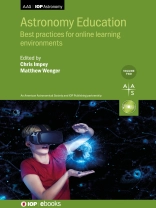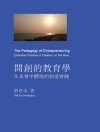Astronomy is a popular subject for non-science majors in the United States, often representing a last formal exposure to science. Online learning environments are increasingly important in the landscapes of higher education and lifelong learning. The number of students taking online classes is growing, and more instructors are being asked to take their teaching online. This practical guide is intended for astronomy instructors who want to develop their first online course as well as those who want to add new tools and experiences to their existing courses. It explores online course design, integrating new and social media into online learning experiences, adaptive learning systems, massive open online classes (MOOCs), and the use of virtual worlds and virtual reality to teach astronomy.
Key Features
- Encapsulates current practices in online astronomy education
- Focuses on learning using real data and accurate simulations
- Provides practical advice on creating a massive open online class
- Tailored to the differing needs of formal and informal leaners
- Includes state-of-the-art adaptive learning technologies
At a time when the coronavirus is still having a severe effect on schools and universities, on-line learning is very much in evidence, and this book is a very up-to-date and comprehensive guide to how it is best approached, particularly for astronomy.
The Observatory, Vol. 141 2021 June
สารบัญ
Preface
Prologue
1 – Guidelines for Teaching Astronomy Online
2 – Who Are We Teaching Online, and Why?
3 – Effective Online Course Design
4 – Astronomy Education in Virtual Worlds and Virtual Reality
5 – Massive Open Online Astronomy Courses
6 – Using New Media and Social Media for Online Learning
7 – Education Through Exploration: A Model for Using Adaptive Learning to Teach Laboratory Science Online
8 – Key Online Resources for Teaching Astronomy
9 – Epilogue: Lessons Learned from Transitioning to Online Learning During Spring 2020 During COVID
เกี่ยวกับผู้แต่ง
Chris Impey is a University Distinguished Professor of Astronomy at the University of Arizona. He has won 11 teaching awards and has taught two online classes with more than 180, 000 students enrolled, as well as more than two million minutes of video lectures watched. He is a past Vice President of the American Astronomical Society and he has been an NSF Distinguished Teaching Scholar, the Carnegie Council’s Arizona Professor of the Year and, most recently, a Howard Hughes Medical Institute Professor.
Matthew Wenger is an Education Program Manager in the astronomy department at the University of Arizona where he developed two massive open online courses (MOOCs), conducts educational research, and manages a team of undergraduate students who assist with research and create educational videos for You Tube and online classes. Wenger has overseen the creation and growth of the Active Galactic You Tube channel and leads weekly professional development workshops that teach students to improve their science communication and video production skills.












